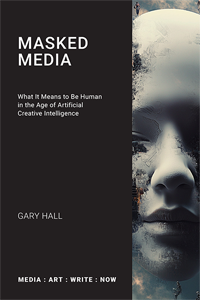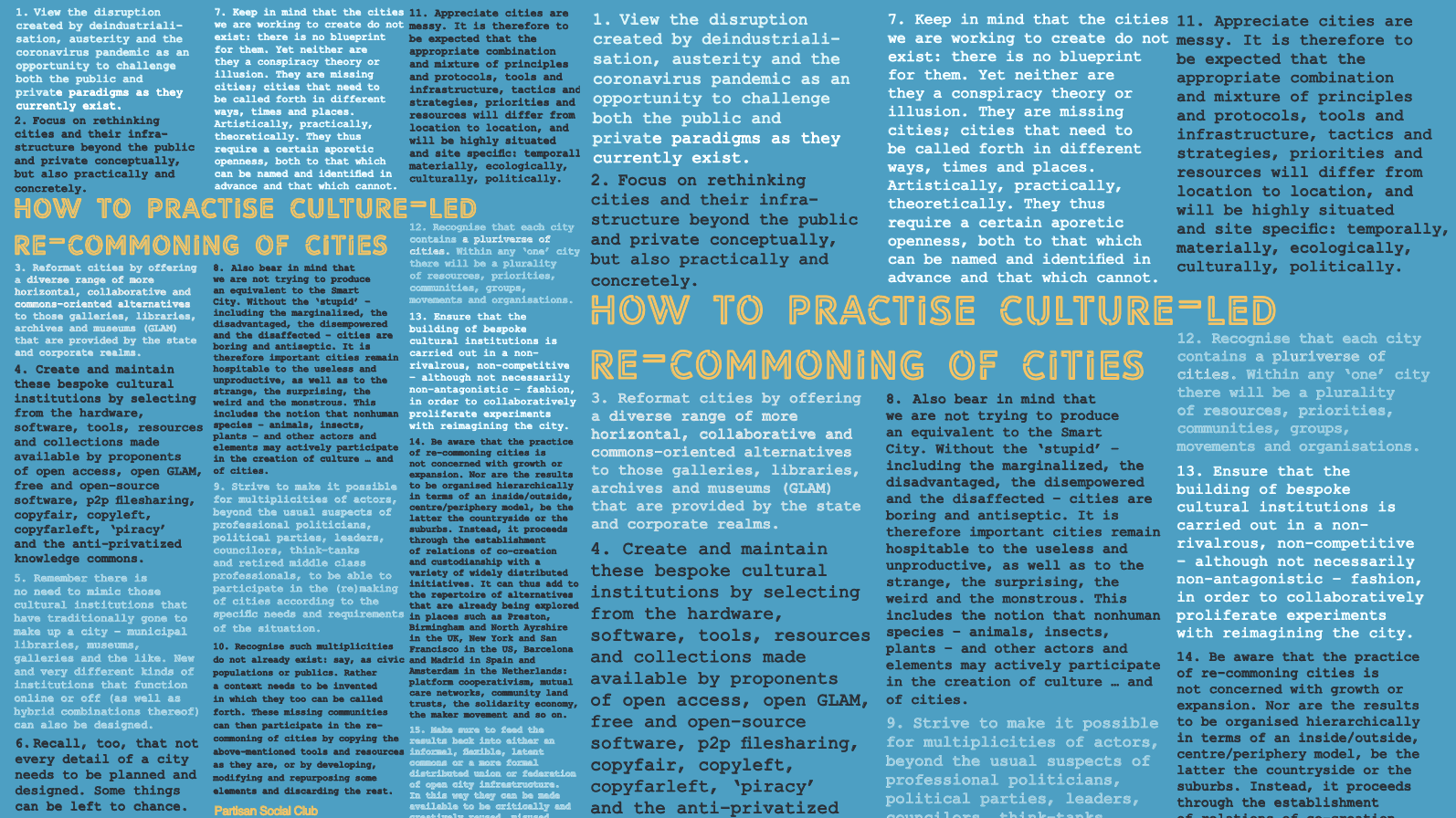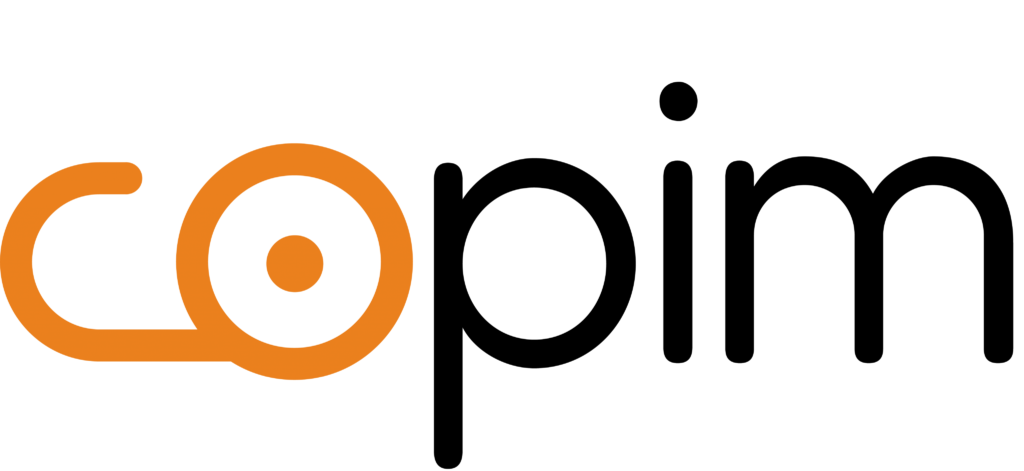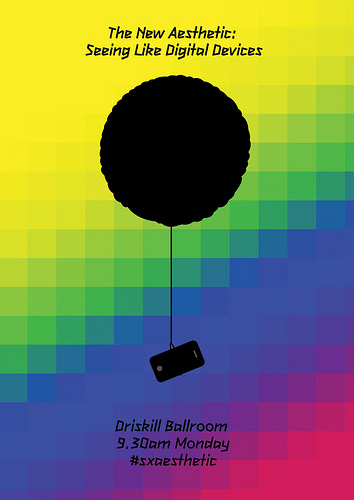For a post-digital post-humanities
 Monday, March 18, 2013 at 9:05AM
Monday, March 18, 2013 at 9:05AM (This is the second part of a post on the MediaCommons front page - the first part is here. It's a response to their survey question: What are the major social/legal/professional stakes with sharing online? The original post and subsequent responses can be found here, where you are also invited to join in the discussion around this question.)
To illustrate what I mean as far as the author, originality, and the human are concerned, let’s take as an example Graham Harman’s Prince of Networks.  This book is published on an open access basis by re.press using the kind of Creative Commons license that would presumably be considered by some to have been more suitable for ‘Declaration’. In Prince of Networks, Harman extends and develops an earlier account of ‘The Importance of Bruno Latour for Philosophy’, in which he presents Latour as having given us ‘possibly the first object-oriented philosophy’. Harman does so on the grounds that ‘there is no privilege for a unique human subject’, for Latour. ‘Instead, you and I are actants, Immanuel Kant is an actant, and dogs, strawberries, tsunamis, and telegrams are actants. With this single step’, Harman writes, ‘a total democracy of objects replaces the long tyranny of human beings in philosophy’. However, even though Prince of Networks is available open access, that doesn’t mean a network of people, objects or actants can take Harman’s text, rewrite and improve it, and in this way produce a work derived from it that can then be legally published. Since Harman has chosen to publish his book under a Creative Commons BY-NC-ND licence, any such act of rewriting would infringe his claim to copyright. This applies to both the right Harman wishes to retain to be identified as the author of Prince of Networks, and to have it attributed to him precisely as a unique human subject; but also to Harman’s right of integrity, which enables him as a singular human being to claim the original ideas its contains as his intellectual property, and which grants him the privilege of refusing to allow the original, fixed and final form of Prince of Networks to be modified or distorted by others, be they humans or objects.
This book is published on an open access basis by re.press using the kind of Creative Commons license that would presumably be considered by some to have been more suitable for ‘Declaration’. In Prince of Networks, Harman extends and develops an earlier account of ‘The Importance of Bruno Latour for Philosophy’, in which he presents Latour as having given us ‘possibly the first object-oriented philosophy’. Harman does so on the grounds that ‘there is no privilege for a unique human subject’, for Latour. ‘Instead, you and I are actants, Immanuel Kant is an actant, and dogs, strawberries, tsunamis, and telegrams are actants. With this single step’, Harman writes, ‘a total democracy of objects replaces the long tyranny of human beings in philosophy’. However, even though Prince of Networks is available open access, that doesn’t mean a network of people, objects or actants can take Harman’s text, rewrite and improve it, and in this way produce a work derived from it that can then be legally published. Since Harman has chosen to publish his book under a Creative Commons BY-NC-ND licence, any such act of rewriting would infringe his claim to copyright. This applies to both the right Harman wishes to retain to be identified as the author of Prince of Networks, and to have it attributed to him precisely as a unique human subject; but also to Harman’s right of integrity, which enables him as a singular human being to claim the original ideas its contains as his intellectual property, and which grants him the privilege of refusing to allow the original, fixed and final form of Prince of Networks to be modified or distorted by others, be they humans or objects.
Granted, there’s probably no quick or easy way of responding to this raising of the stakes for theory and philosophy. To be fair, such social/legal/professional blindspots are far from confined to Hardt and Negri, Harman, or Latour for that matter, who likewise continues to act as if he is a modern in this respect, even as he insists we have never been modern. In fact, oversights and elisions of this kind affect the majority of those theorists and philosophers who are currently attempting to replace the tyranny of the human with an emphasis on the nonhuman, the posthuman, the inhuman and the multi-scalar logics of the ‘anthropocene’. Thanks to the way in which they, too, have responded to the issue of the social/legal/professional implications of sharing – whether it’s on a ‘Copyright…All rights reserved’ or Creative Commons basis - such ‘post-theory theories’ and philosophies continue to be intricately bound up with the human in the very performance of their attempt to think through and beyond it.
Be that as it may, the high stakes raised by your survey remain - for hopefully this post, too, is more than merely a cheap shot. So let me raise a question that’s also an exhortation: How as theorists and philosophers can we perform our work, business, role and practices differently – to the point where we might actually confront, think through and assume (rather than marginalise, repress, ignore or take for granted) some of the implications of sharing online for our ideas of authorship, subjectivity, originality, the text, the book, intellectual property, copyright, piracy – and, indeed, the human?
In other words, can we work towards the development, not of a digital humanities, but rather what might be called (rather clumsily, I admit) a post- digital post-humanities. What would something of this kind look like? What forms could it take? Would such a post-digital post-humanities not likewise call for 'new modes of address, new styles of publishing and authoring, and new formats and speeds of distribution', to borrow the words of Tom Cohen and Claire Colebrook from their Critical Climate Change series regarding the possibility of extinction?
 One possible starting point for thinking about how we might address this issue is provided by Lawrence Liang in his essay ‘The Man Who Mistook His Wife for a Book’, which appeared in Gaelle Krikorian and Amy Kapczynski’s edited collection from 2010, Access to Knowledge In the Age of Intellectual Property. There Liang recounts how ‘Indian culture does not draw a distinction between an agent who performs an action and the action that the agent performs'. Instead, 'an agent is constituted by the actions that he or she performs, or an agent is the actions performed and nothing more’. Translating this idea into the context of Western thought we can see the focus now, rather than being on what a theorist or philosopher writes about the nonhuman, the posthuman, the inhuman, is much more on the theory and philosophy of the nonhuman, the posthuman, the inhuman - or the commons, commoning and communism - that he or she acts out and performs.
One possible starting point for thinking about how we might address this issue is provided by Lawrence Liang in his essay ‘The Man Who Mistook His Wife for a Book’, which appeared in Gaelle Krikorian and Amy Kapczynski’s edited collection from 2010, Access to Knowledge In the Age of Intellectual Property. There Liang recounts how ‘Indian culture does not draw a distinction between an agent who performs an action and the action that the agent performs'. Instead, 'an agent is constituted by the actions that he or she performs, or an agent is the actions performed and nothing more’. Translating this idea into the context of Western thought we can see the focus now, rather than being on what a theorist or philosopher writes about the nonhuman, the posthuman, the inhuman, is much more on the theory and philosophy of the nonhuman, the posthuman, the inhuman - or the commons, commoning and communism - that he or she acts out and performs.









